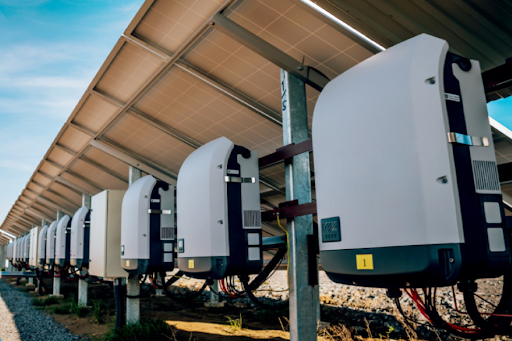The Story Behind the Solar Neighbours Program
There’s many reasons for the popularity solar enjoys today, but unquestionably the longstanding support by green energy advocates in years prior set...
Gigantic solar installations in space. It sounds fanciful – something out of Star Wars or Star Trek’s universe – but what if it’s actually possible? What’s more, what if it’s actually sensible? Something that isn’t just simply technologically possible, but also economically justifiable.
These are real questions that solar enthusiasts must ask themselves in the 2020s. This is ultimately owing to a number of reasons – namely the rapid growth of businesses and investment in both the space and renewables industries over the past decade – but undoubtedly the establishment of massive solar installations in space would also represent ‘one giant leap’ for solar, and space exploration. That’s why now is a good time to examine the potential of space-based solar.
Anyone currently reading this article while residing beneath a rooftop solar installation could fairly wonder if getting solar up into orbit is really worth all the trouble. That’s a fair call. Especially as there’s no doubt – for all the remarkable growth and terrific success the solar sector in Australia and elsewhere has had – clearly more needs to be done on Earth to boost renewable uptake. But getting more solar panels into space isn’t going to undermine the growth of renewables on Earth.
After all, space-based solar actually isn’t new. The International Space Station has made use of a solar installation for many years now, and in fact, recently announced upgrades to it earlier this year. In turn, with the growth of the commercial space sector led by the likes of SpaceX and Blue Origin, there’s a renewed interest in space activity alongside an enhanced capability to send people and goods into orbit.
So not only can building solar installations beyond Earth assist with space exploration, but also serve as a powerful symbol of solar’s immensely powerful and versatile capabilities. That’s undoubtedly good PR for getting more panels on rooftops. But how would a massive solar installation in space actually work?
The Australian company Solar Space Technologies (SST) has put forward a bold plan for space-based solar. Led by Melburnian Serdar Baycan as its founding director alongside Californian-based director John C. Mankins, SST aspires to create a huge solar installation in space that’s ready for operation by 2027.
SST’s project has an appropriately grand terminology accompanying it. It seeks to create a “solar powered satellite by means of arbitrarily large phased array”. It’s of course no surprise such an idea involves a galaxy’s worth of calculations and planning. However, the basic sequence behind their tech to make a space-to-planet transfer is actually quite simple.
First, the panels in space harvest solar power. Second, they transport it via microwave energy transfer to a ground station receiver here on Earth. Third, that ground station then funnels the power through the local grid, which then makes its way to homes and businesses. When it comes to overcoming logistical and monetary hurdles of bringing their plan into being, SST cites the declining costs of transporting cargo into space and the rising efficiency of solar power as key factors that are in the project’s favour.
SST has framed their plan as one with practicality in mind, possessing a clear-eyed recognition of existing challenges on Earth that’s interwoven with the inspiring benefits of space-based solar. It cites a rapidly growing global population and a great surge in demand for electricity in future as key justifications for increasing energy production. Yet conversely, SST holds electricity generation must be clean so it doesn’t contribute to global warming and hinder sustainability. In a nutshell, the project seeks to pioneer in space, and problem-solve on Earth.
Yet there’s no doubt getting solar into space is an expensive exercise. SST indicate when all is said and done their first phase will have cost up to US$40 million, their second up to US$150 million, and their third will have an initial cost up to US$8 billion. But sizeable as these figures may seem at first, in 2019 alone it’s held US$366 billion was earned in the commercial space sector. Yes, it would cost billions to bring online massive space-based installations, but the potential revenue that can be generated in future on Earth and in space due to these installations is expected to far outpace the upfront costs of installing them.
Space exploration is ultimately in its infancy. There remain many new chapters to be written before we can confidently say the first volume of human history in this early era is completed. As a result, we can expect trials and tribulations ahead, and in turn that the mass rollout of space-based solar regularly – effectively ‘like clockwork’ – is surely still a while away. But all up, that’s what makes this chapter of space-based solar so exciting.
Although following Apollo 11’s landing, sights were set for a human-led mission to Mars – something now set to happen in a few short years led by SpaceX, NASA, and other entities – the lead up to the Apollo 11 Moon landing was unquestionably the most exciting of all. It will be similar with space-based solar. Eventually, huge solar installations are set to become a common sight in space just as rooftop solar installations are today here on Earth. Meantime, we can enjoy their developmental progress on Earth, and look forward to their launch into the skies above it.
Just as we all look forward to seeing space-based solar progress, if you’re currently looking to get a solar installation of your own? There’s a number of questions you should ask before doing so. If you’ve already got a solar installation in place? Then it’d be a good idea to have a quick check of our article here to ensure you’re getting the very most out of your system.

There’s many reasons for the popularity solar enjoys today, but unquestionably the longstanding support by green energy advocates in years prior set...
An Australian manufacturing firm, Heuch, survived the collapse of the Australian car industry by converting their business into a solar manufacturing...

Many Australians with an interest in solar find the dynamics between batteries and feed-in tariffs confusing. This is completely normal. After all,...